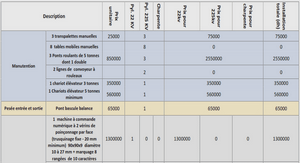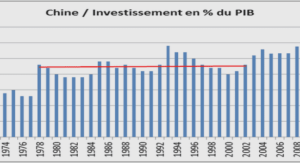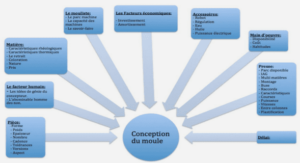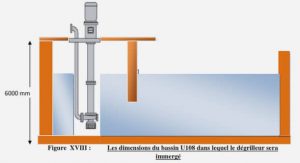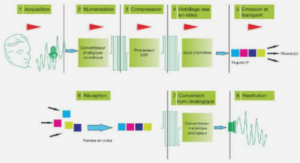Heterogeneous materials with evolving microstructure : constitutive modeling
Models for porous media with dilute concentrations
In this section, we will make an attempt to summarize the main issues of earlier studies made in the context of dilute porous media. We discuss first the methodology developed by Budiansky et al. (1982) in the context of porous media containing a spherical (or cylindrical with circular cross-section) void subjected to axisymmetric loading conditions (aligned with the void symmetry axis). Then, we discuss the extension of this method to cylindrical voids with elliptical cross-sections by Fleck and Hutchinson (1986) and Lee and Mear (1992b), and to spheroidal voids by Lee and Mear (1992c). 3.2.1 Spherical void and axisymmetric loading To begin with, based on the early study of McClintock (1968) and Rice and Tracey (1969) in dilute porous solids with ideally-plastic matrix phase, Budiansky et al. (1982) proposed a methodology making use of the minimum principle of velocities as stated by Hill (1956), to compute the effective energy of dilute viscoplastic porous media (i.e., an infinite block Ω occupying volume V containing a single void Ω(2) occupying volume V2) subjected to axisymmetric loading conditions. The matrix phase Ω(1) occupies a region with volume V1. In this procedure, the minimum principle can be written in terms of the dissipation potential W such that F = Z V1 h W(D) − W(D∞) − σ ∞ ij Deij i dV − Z S2 σ ∞ ij nj vei (3.4) where the subscripts 1 and 2 denote quantities in the matrix and the void, respectively, D∞ is a uniform strain-rate due to σ∞ in the absence of the void and vi = v ∞ i + vei , D = D∞ + De , (3.5) with Deij = 1 2 (vei,j + vej,i), vek,k = 0. (3.6) In these expressions, D is the local strain-rate in the specimen, whereas the F is minimized with respect to the velocity field ve. By considering the volume average in (3.5), we get D = D∞ + hDe i. (3.7) In this regard, the Rayleigh-Ritz method is used in the sequel to generate approximate expressions for the additional velocity field ve. More specifically, the authors make use of the incompressibility of the matrix phase and the axisymmetric loading to introduce a “stream function”, so that ver = − 1 r 2 sin θ ∂ (χ sin θ) ∂θ and veθ = 1 r ∂ χ ∂r . (3.8) It is worth recalling that the stream function is introduced mainly for two reasons; (i) instead of guessing a form for the two components of the velocity field ver and veθ, we need to provide a form for a scalar function, i.e., the stream function χ, and (ii) the above velocity fields satisfy the incompressibility condition trivially. In this regard, a form for the stream function χ can be obtained by considering an eigen-function expansion, such that χ(r, θ) = A cot θ + X k=2,4,… Pk,θ(cos θ) fk(r), (3.9) 86 Other models for porous materials where Pk(cos θ) is the Legendre polynomial of degree k and fk(r) = P M i=1 A (i) k r 2−i . It is interesting to remark that the first term, A cot θ, generates the spherically symmetric contribution to the field. Note, however, that the notion of a stream function is mainly used in two-dimensional or threedimensional with certain symmetries (i.e., axisymmetric symmetry) problems. In contrast to extend this technique to the cases of a general three-dimensional loading or void geometry (such as general ellipsoidal voids), which is of interest in many applications, becomes a very difficult task and so far the author is not aware of such a more general result in the context of porous materials. This is a certain limitation of this procedure, since a generalization of this methodology to more complicated microstructures and loadings is not straightforward. Now, the associated with the stream function strain-rate fields are simply Der = ver,r, Deθ = 1 r (veθ,θ + ver), Deφ = −Der − Deθ, Der θ = 1 2 µ 1 r ver,θ − 1 r veθ + veθ,r¶ . (3.10) In these expressions, the velocity and strain-rate fields depend explicitly on the amplitude factors A (i) k , with respect to which F must be minimized. Thus, the actual velocity field is approximated by the velocity field ve, described previously, in terms of the factors A (i) k . It is evident that the larger number of factors A (i) k used, the better the approximation to the actual field will be. However, this poses numerical limitations to the solution of the problem. Nonetheless, the authors used physically based considerations — the trial velocity field ve should be able to recover the Eshelby (1957) solution in the linear case — to choose a minimal number of A (i) k to include in the minimization procedure. On the other hand, Huang (1991b) has shown that the choice of the number of amplitude factors is of critical importance, particularly at high nonlinearities, where a sufficiently large number of A (i) k must be used for convergence. As a consequence, he showed that the results delivered by Budiansky et al. (1982), as well as Rice and Tracey (1969), seriously underestimate the dilatation rate of the void at large stress triaxialities. In summary, the above mentioned methodology approximates the actual field by a sum of linearly independent functions that are multiplied by certain amplitude factors. The relevant function then is minimized “numerically” with respect to these amplitude factors. In turn, it is emphasized that this technique is based on a choice of a stream function, where a special class of microstructures and loading conditions is considered. This special class of microstructures involves the cases of porous media with cylindrical voids with circular or elliptical cross-sections as we will see in the following sections, as well as porous materials consisting of spherical voids subjected to axisymmetric loading conditions (aligned with the pore symmetry axis). On the other hand, the extension of this methodology to general three-dimensional ellipsoidal microstructures and loading conditions is not straightforward, due to the fact that the stream function technique is restricted to problems with two-dimensional character, such as the ones mentioned previously. Nonetheless, these limitations do not eliminate the usefulness of such methods, which were able to predict interesting nonlinear effects to be discussed in the following chapters. Other models for porous materials
Cylindrical void with elliptical cross-section using conformal mapping
Building on the work of Budiansky et al. (1982) and Duva and Hutchinson (1984), Fleck and Hutchinson (1986) made an attempt to apply the methodology described previously to dilute porous media consisting of cylindrical voids with elliptical cross-section. In order to generalize this methodology, Fleck and Hutchinson (1986) made use of a conformal mapping technique, which allowed them to write a stream function for a void with elliptical cross-section. In order to achieve this mapping, they used a complex variable z in the physical plane and a complex variable ζ in the mapped plane (see Fig. 3.1 for details), which are related by z = r ei θ = x1 + i x2 = R (ζ + m/ζ), ζ = ξ1 + i ξ2, (3.11) where x1, x2 and r, θ are Cartesian and polar coordinates in the physical plane, and ξ1, ξ2 and µ, φ are Cartesian and polar coordinates in the mapped plane. In turn, the variables R and m = |m|e i λ contain information about the shape and orientation of the void and are given by R = a1 + a2 2 , |m| = a1 − a2 a1 + a2 , λ = 2 ψ. (3.12) Here, a1 is the length of the semi-major axis of the ellipse, a2 is length of the semi-minor axis, and ψ 1 x (1) (2) n n α1 α2 2 x physical plane 1 ξ 2 ξ µ φ mapped plane 1 x 2 x θ r Figure 3.1: Geometry of the void and mapping from physical plane to mapped plane. ψ is the orientation angle of the semi-major axis. The details of the geometry and the mapping are shown schematically in Fig. 3.1. Then, they defined a stream function, similar to the one defined by Budiansky et al. (1982) in relation (3.9), which is expressed as χ(r, θ) = A θ + X N j=1 X N k=1 © Ajk µ k−1 sin 2jφ + Bjk µ k−1 sin 2jφª . (3.13) From this stream function, the authors need to compute the velocity and strain-rate fields, substitute in the minimum principle (3.4), and optimize with respect to the amplitude factors A, Ajk and Bjk. Note that the leading term A θ in (3.13) gives rise to the radially symmetric contribution and thus to the dilatation rate of the void. In the following, we discuss the boundary conditions considered in that work and the connection with the homogenization estimates presented in the previous chapter. In particular, the remote field 88 Other models for porous materials is considered to be a state of simple shear parallel to the e (1)−direction with hydrostatic tension superimposed on the incompressible material. The remote field is then specified by the velocities v ∞ 1 = ˙γ x2, v∞ 2 = v ∞ 3 = 0, (3.14) where ˙γ is the remote shear strain-rate, and x2 is the coordinate in the e (2)−direction. The associated non-zero components of the remote strain-rate, spin and stress are D∞ 12 = 1 2 γ, ˙ Ω ∞ 12 = 1 2 γ˙ (3.15) and σ ∞ 11 = σ ∞ 22 = σ ∞ 33 = σm, σ∞ 12 = τ. (3.16) The corresponding stress triaxiality defined in the work of Fleck and Hutchinson is related to the standard stress triaxiality used in this work by σm τ = √ 3 XΣ = σm σeq/ √ 3 = σm τ /√ 3 , (3.17) where σm and σeq are the macroscopic mean and von Mises stress measures, respectively. It is also useful to relate ˙γ with the remote, equivalent strain-rate D∞ eq and the equivalent macroscopic stress by noting that γ˙ = √ 3 D∞ eq = √ 3 σ n eq, (3.18) where n describes the nonlinearity of the matrix phase and has been introduced in relation (2.23). In this case of a long cylindrical void the considered deformation is one of plane-strain and therefore independent of x3. When the cylindrical void has a circular cross-section in the plane 1 − 2 then the behavior of the porous medium is isotropic in this plane. However, when the aforementioned boundary conditions are applied, then the volume, shape and orientation of the void are expected to evolve in time. More specifically, the interest is focused on the determination of the initial dilatation rate, which is related to the macroscopic strain-rate D, defined in relation (3.7), through the relation V˙ 2 γ˙ V2 = Dαα √ 3 f D∞eq , α = 1, 2. (3.19) In summary, based on the work of Budiansky et al. (1982), Fleck and Hutchinson (1986) proposed a stream function by making use of a conformal mapping technique, which allowed them to obtain estimates for dilute porous materials consisting of cylindrical voids with elliptical cross-section. In the following chapters, the estimates delivered by the homogenization methods, described in the previous chapter, will be compared with the Fleck-Hutchinson results in the case of an initially cylindrical void with circular cross-section.
Cylindrical voids with elliptical cross-section using elliptical coordinates
In addition to the work of Fleck and Hutchinson (1986), Lee and Mear (1992b) have also studied the problem of a dilute, viscoplastic porous medium made up of an isolated cylindrical void with elliptical Other models for porous materials 89 cross-section. In their work, they made use of an equivalent representation of the minimum principle in terms of stress potentials, whereas they also proposed a somewhat different stream function by making use of elliptical coordinates. More specifically, the effective stress potential of a solid containing dilute concentration of voids can be expressed as Ue(σ) = U(σ) + f δUe δf , δUe δf = 1 A2 Z A1 [U(σ) − U(σ)] dA − U(σ) (3.20) where A2 and A1 are the regions occupied by the void and the matrix phase, while U denotes the stress potential of the matrix phase and is given by relation (2.23)1. It is important to note that expression (3.20) implies that the effective stress potential Ue of the porous solid has a linear correction in the concentration of the voids, i.e., the porosity f. However, we will see at the end of this section that such an expansion may have a very small range of validity for very nonlinear solids and particularly for ideally-plastic solids where such an expansion may not be valid at all (see Duva and Hutchinson, 1984). In any case, the above correction term δU /δf e can be directly related to the minimum principle, defined previously in the context of relation (3.4), through the relation (Duva and Hutchinson, 1984; Lee and Mear, 1992b) δUe δf = W(D∞) − Fmin A2 , (3.21) where Fmin denotes the minimized (optimal) value of F. Note that the volume and surface terms V1 and S2 in relation (3.4) should be replaced here by the surface and line terms A1 and C2 due to the in-plane character of the problem. For further details the reader is referred to the original work of Lee and Mear (1992b). In order to compute the correction term δU /δf e for porous media containing cylindrical voids with elliptical cross-section, these authors proposed a stream function in terms of elliptical coordinates (η, θ) (the η coordinate is equivalent to the radial variable in polar coordinates), such that χ = A θ + X k=2,4,… [Fk(η) sin k θ + Gk(η) cos kθ] , (3.22) where Fk and Gk are functions of η alone given by Fk(η) = X m=−1,0,1,… Akm exp(−mη) Gk(η) = X m=−1,0,1,… Bkm exp(−mη). (3.23) The reduced displacement ve, defined in relation (3.5), is simply given by veη = α H ∂χ ∂θ , veθ = − α H ∂χ ∂η , (3.24) where H = α (cosh2 η −cos2 θ) 1/2 and α is a scaling parameter related to the distance from the origin to the foci of the elliptical void. Similarly to the work of Budiansky et al. (1982), the above velocity fields are plugged in the minimum principle F defined in relation (3.4), where the minimization 90 Other models for porous materials procedure is performed with respect to the amplitude factors A, Akm and Bkm, defined in (3.22) and (3.23). In the following, we discuss the boundary conditions used by Lee and Mear (1992b) in their study. In particular, these authors imposed somewhat different boundary conditions than the ones considered by Fleck and Hutchinson (1986). More specifically, Lee and Mear studied the response of a dilute, porous solid subjected to plane-strain, traction boundary conditions. The corresponding remote stresses, that have been used, are σ ∞ 11 = S ∞, σ∞ 22 = T ∞, σ∞ 33 = 1 2 (S ∞ + T ∞). (3.25) The stress triaxiality XΣ may be defined as in relation (3.17) by noting that σm = (S∞ + T ∞)/2 and σeq = √ 3|S∞ − T ∞|/2. It is important to note that in the case that the void has an initially circular cross-section in the plane 1 − 2 then the behavior is isotropic in this plane. In this special case, the boundary conditions applied by Fleck and Hutchinson (1986), described by relation (3.16), are equivalent to the boundary conditions imposed by Lee and Mear (1992b) given by relation (3.25). The reason for this lies in the fact that the initial response of isotropic media subjected to simple or pure, in-plane shear combined with superimposed pressure is identical. In this regard, it is essential to analyze the relevant dilatation and deviatoric quantities introduced by Lee and Mear (1992b). In particular, the Lee and Mear (LM) effective stress potential can be written in the form UeLM(σ) = (1 + fh(XΣ)) ε˙o σo n + 1 µ σeq σo ¶n+1 . (3.26) In this expression, the authors make the hypothesis that the effective stress potential Ue has a linear correction in the porosity f, and since the interest is for dilute porous media, only the first order term is considered. By comparing the last expression for the effective stress potential UeLM with the corresponding expression provided by the homogenization methods in relation (2.24), it is easily deduced that h(XΣ) = 1 f (bh(XΣ) − 1). (3.27) Then, Lee and Mear define a scalar function P(XΣ), which is directly related to the dilatational rate defined in relation (3.19) by P = 1 n + 1 ∂h ∂XΣ = Dαα fD∞eq ⇒ V˙ 2 γ˙ V2 = P √ 3 , α = 1, 2, (3.28) where D∞ eq denotes the remote equivalent strain-rate in the absence of voids. In addition to the dilatational part of the macroscopic strain-rate, it is useful to study, as well, the deviatoric part of D. For this reason, Lee and Mear have defined the scalar function Q(XΣ), which is directly related to the equivalent part of the macroscopic strain-rate Deq, defined in (3.7), such that Q = h − XΣ P = Deq − D∞ eq f D∞eq .
2 Theory |

